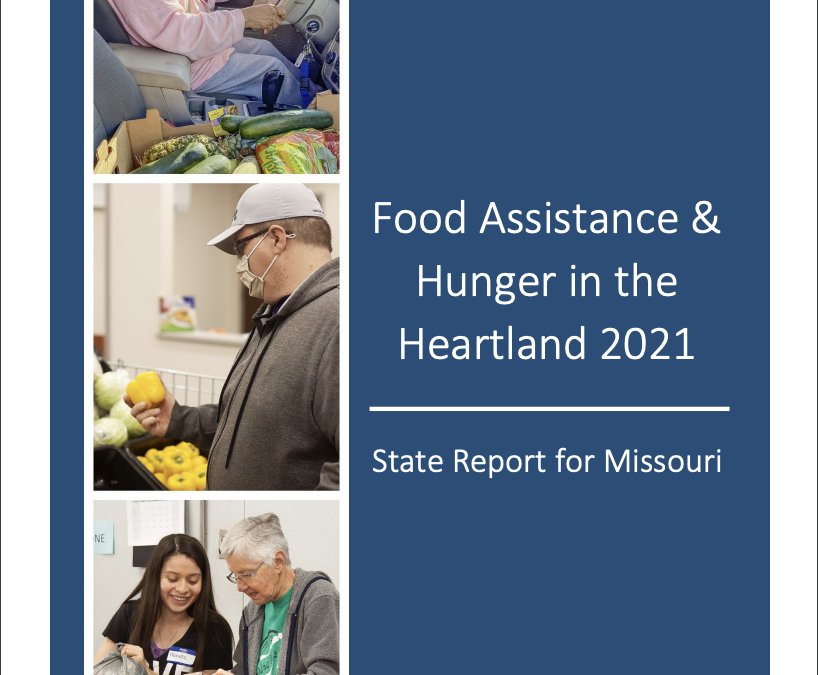Columbia, MO – A new report from the University of Missouri shows the ongoing challenges thousands of Missourians are facing when it comes to hunger. The Food Assistance & Hunger in the Heartland (FAHH) 2021 report released today shows that Missouri’s food banks serve hundreds of thousands of Missourians each year and the need continues to be significant.
Many Missourians are facing record-high food, energy, and gas prices and for food pantry guests this means difficult choices have to be made to make ends meet. As the FAHH 2021 study points out 46% of pantry visitors had to choose between food and utilities, 38% had to decide between buying food or paying for medicine/medical care, 34% had to choose either paying for housing or food.
The report, commissioned by Feeding Missouri and conducted by MU Interdisciplinary Center for Food Insecurity, represents an unprecedented state-wide effort to better understand the challenges and characteristics of hunger-relief agencies and the circumstances of those seeking food assistance. It was coordinated in partnership with the six regional Missouri food banks ⸺ Harvesters Community Food Network, Ozarks Food Harvest, Second Harvest Community Food Bank, St. Louis Area Foodbank, Southeast Missouri Food Bank, and The Food Bank for Central and Northeast Missouri.
The FAHH looked at hunger in Missouri from two distinct angles: A client survey, which seeks to gain insight into the people who rely upon food pantries to help meet their nutritional needs and an agency survey, which examines the challenges faced by the state’s food pantries. There is a statewide report for Missouri, as well as six regional reports for each Missouri food bank.
Food insecurity is a complex issue and addressing it presents some unique challenges. “This data shows that hunger remains a persistent problem in our state and its impacts are far-reaching,” said Scott Baker, State Director for Feeding Missouri. “Too many Missourians are forced to choose between feeding their families or paying for medicine or rent. There’s a lot of work to be done.”
“The report illustrates the critical role the food banks and pantries play in supplying food to struggling families,” stated Baker. Missouri’s food insecurity rates have consistently been above the national average. Hunger relief agencies continue to see increased demand compared to pre-pandemic levels. “Many of our food banks are serving close to double the amount of people,” noted Baker, “and it’s clear we are still in the early stages of a recovery period.”
“We are truly grateful to the team at MU for their incredible support and care in conducting this study [which] tells the story, from first-hand accounts, about what food insecurity looks like across the state.,” said Meredith Knopp, Board President for Feeding Missouri and CEO of St. Louis Area Foodbank.
For more information on the Food Assistance & Hunger in the Heartland: State Report for Missouri you can visit our web page at feeding missouri.org.
###
About Feeding Missouri
Feeding Missouri is the largest charitable response to hunger in the state. Our network consists of six regional food banks and over 1,000 agencies working to provide hunger relief to every county (and the city of St. Louis) in the state of Missouri.


